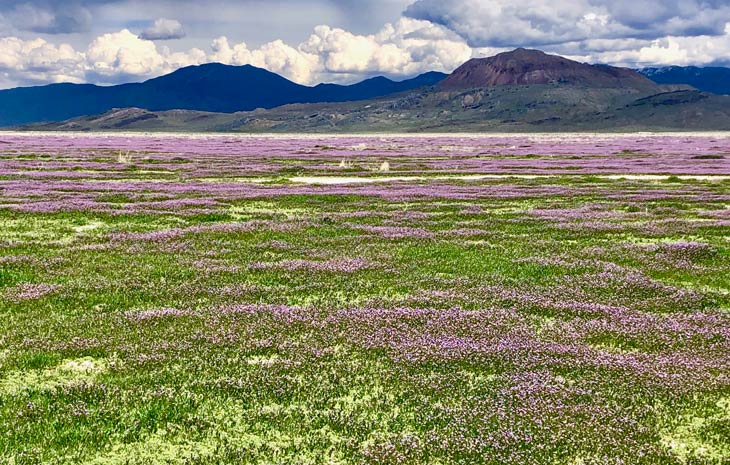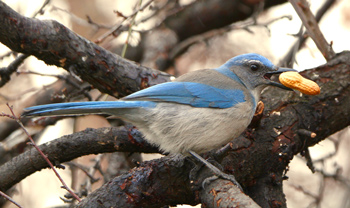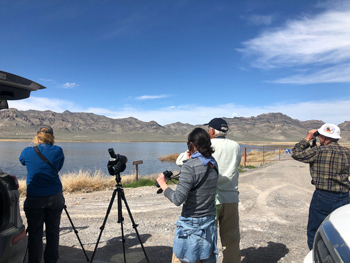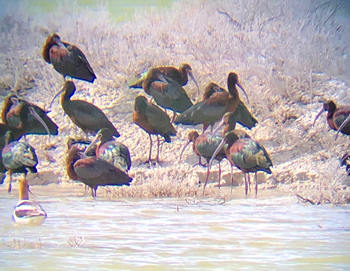Utah County Birders
Newsletter
|
|||||||||||||||||||||||||
 |
Contents
Monthly Meeting
Upcoming Field Trips
Captain's Log
Bird of the Month
Field Trip Reports
Printable Version
Thursday, May 9th at 7:00 pm at the Monte L. Bean Museum. Map to Museum
Jesse Lee will be our guest speaker with a presentation titled ďCosta Rica - A World of WingsĒ
May 13th - Utah County Hot Spots trip for the club to prepare for the festival trip if anyone wants to go. It will be on May 13th 7-3. meet at Walmart parking lot NE Corner.
Friday, May 31st and Saturday, June 1st - WASHINGTON COUNTY
Lead by Suzi Holt. You will need your own accommodations.
We will meet at the McDonald's on Bluff Street Friday morning at 6 am to head out to Lytle Ranch. Bring a lunch. On the way back we will stop by Utah Hill to look for the Black-chinned Sparrow, then look for a Bell's Vireo and Common Blackhawk along the Sanra Clara River. We may go to Snow Canyon, Tonaquint Nature Park, Brooks Narure Park and Boits/Cox Park if time permits.
Saturday we will start out looking for Inca Doves in Hurticane, then head to Kolob Terrace. Meet at 7 am at the Wal-Mart in Hurricane in the SW corner of the parking lot. It is located east of the Sand Hollow turn off, along Hwy 9, 180 N 3400 W Hurricane
Utah County Birders
Captainís Log - May 2019
by Keeli Marvel
Hello my faithful and courageous Birders! Spring has sprung and migration is in full swing! The past couple of weeks have brought an influx of spring migrants in my neighborhood and Iíve been celebrating each new arrival. Iím still participating in the 5MR challenge and this month the special challenge (in addition to adding birds to my 5MR list is to keep a yard list of species I see/hear in or from my yard. While I feel like I donít have the birdiest of yards compared to some, it definitely hasnít been too shabby and itís certainly made spring migration that much more fun as I try and spend more time outside in my yard spotting migrants. Iíve racked up 83 species in my 5MR and 22 species in my yard. So far my yard list includes the following:
| House finch Great horned owl American robin Sandhill crane Raven California gull Canada goose American goldfinch |
House sparrow Eurasian collared dove Killdeer American Kestrel Red-winged blackbird Yellow-rumped warbler (Myrtle) Yellow-rumped warbler (Audubon) Northern flicker |
Lesser goldfinch Black capped chickadee White crowned sparrow Western kingbird Swallow sp Turkey Vulture Yellow Warbler |
I head to TX on Monday for a
work training and Iím hoping to pick up a few more lifers while Iím down
there. Stay tuned for next monthís article to find out if Iím successful!
Happy Birding!
Keeli Marvel
|
Western Scrub-Jay aka Woodhouse's
Scrub Jay
(Aphelocoma woodhouseii )
by Jim Strong
Description: Blue head with a thin white eyebrow and no crest.
The throat is white with a blue streaked necklace. The back is gray
with a dark gray saddle, blue band on the chest with whitish and
grayish under parts. The legs, feet and bill are black. |
||
|
|
||
|
|
||
|
Fish Springs National
Wildlife Refuge |
||
 |
||
|
Nine birders met on
a beautiful Friday evening to make the trek out to Fish Springs National
Wildlife Refuge. We made a couple stops along the way to check out
LONG-BILLED CURLEWS south of the Dugway Proving Ground gate and then a quick
stop at Simpson Springs. It was a fairly quiet evening but we saw 6 or 7
curlews in all along the way. Once we got settled in at Fish Springs we went
out for a moonlight walk, however, it was a pretty quiet night. |
|
|
|
We also saw several FOY sparrows and thrashers including
BLACK-THROATED SPARROW, LARK SPARROW, BREWERíS SPARROW and SAGE THRASHERS and
also heard VIRGINIA RAIL, SORA, and WILSONíS SNIPE. The spring green-up in the west desert made for a beautiful drive and we had a great time getting to know each other and getting to see some of area behind the gates at Fish Springs that arenít always publicly accessible. Thanks to everyone who joined us! |
||


